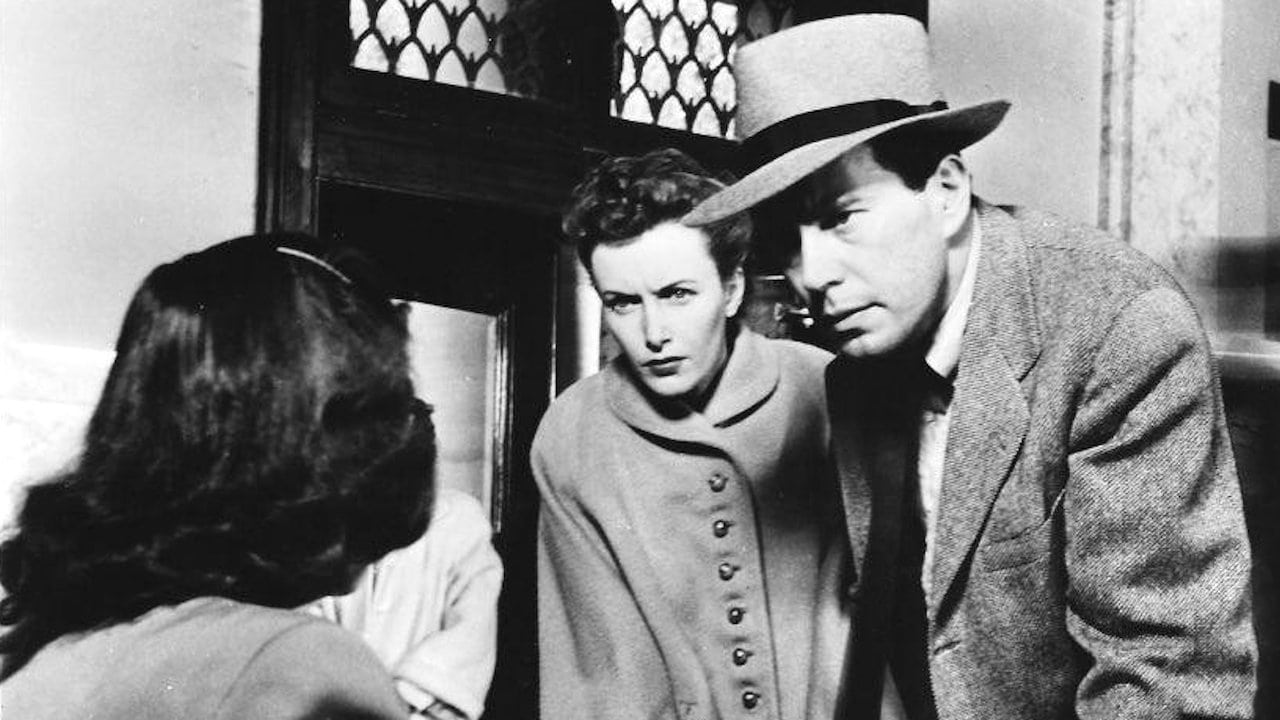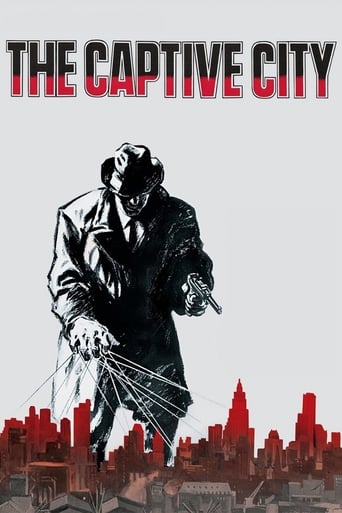

Sadly Over-hyped
... View MoreAmateur movie with Big budget
... View MoreThe first must-see film of the year.
... View MoreIt's the kind of movie you'll want to see a second time with someone who hasn't seen it yet, to remember what it was like to watch it for the first time.
... View MoreAn earlier reviewer had it right. It was directed by Robert Wise, to whose later "Invasion Of The Body Snatchers," this bears a certain structural resemblance. John Forsythe and his wife driving madly along a highway pursued by an ominous black car. They frantically pull into the nearest town, rush into the police station, and beg for help from an uninterested authority. Forsythe does everything but shout, "You're NEXT!" There's a big difference though. "Invasion of the Body Snatchers" is a chipper, tense, vision of 50s paranoia. This is the story of a newspaper editor who discovers that some organization called "the mafia" is behind a lot of bookie joints in the small town of Kennington. The police are helpless. The town's church fathers are resigned. Two witnesses are murdered. Is there no hope at all? Okay, homicide is a devalued act, and nobody should gamble except on the stock market. But you can see that this story is light years from an insidious invasion by pod people. It's a weak story. At times it drags. We never get to meet any Mister Bigs, just their flunkies and goons, and even THEY aren't especially frightening.They're not frightening because they haven't been given any subtlety in their lines. Everybody says things like, "Jeez, lay off, will you?" John Forsythe and Kevin McCarthy (of "Invasion") have something in common in that they're both blandly handsome. But this is McCarthy's kind of role, not Forsythe's. McCarthy really lets us know when he's in extremis. He can act. Forsythe's is a soothing presence, perhaps a supporting player, a family friend or a concerned doctor.It would be interesting for someone who has seen neither movie to watch them in sequence. After that, they should watch "Phoenix City Story." And, if they're still awake, try something a bit recherché -- take a look at "On the Waterfront."
... View MoreRobert Wise directs this drama about crime in a small city. John Forsythe plays Jim Austin, a small town newspaper editor that is a crusader for all that is right, and is not afraid to fight what is wrong. A local private detective, Clyde Nelson(Hal K. Dawson), is working on a simple divorce case and uncovers something way more important. Nelson discovers a major gambling ring operating in the city. He believes that a small time mob boss Murray Sirak(Victor Sutherland) has his thumb on bookie joints that occupy almost every corner in town. Nelson brings this to Austin's attention, be doesn't put faith in the story until the detective is killed in a hit-and-run accident. Austin gets a somewhat cold shoulder when he goes to the police Chief(Ray Teal); its now up to him and his paper to rid the corruption and bring honest and respectable elements to his city. Other players: Joan Camden, Paul Brinegar, Ian Wolf and Martin Milner.
... View MoreIn reviewing "The Captive City" one must acknowledge the great director Robert Wise. Wise will always be remembered for "The Sound of Music", "West Side Story", and "The Day the Earth Stood Still". But, for this viewer The Captive City fell through a crack as I'd never seen or heard of it. Until now, that was my loss However, it's always a joy to find an old film in the noir vein with some "meat-on-the-bone", and this definitely qualifies.Following on the heels of the excellent sci-fi drama "The Day the Earth Stood Still" may have hurt this film in the annals of time a bit. I can't say that I know what it did to the box office at the time, but it certainly had slipped through my grasp in the intervening years. It certainly had a limited budget as evidenced by the "C-list" cast, yet John Forsythe puts forward an admirable lead that the good story was hung on. I couldn't find out for sure how the screenplay was concocted, but I definitely get the feeling it was a composite of real events occurring at the time in many places in a post-war USA. In other words: The Captive City was based on fact if dramatized. I'd say it did a good job of coming off as just that. It reminded me of "The Phenix City Story" in many ways as a town was in the midst of increasing graft whereby "the mob" wanted a bigger cut with more control. Something needed to be done as things began to take a murderous turn. Enter newspaper editor Jim Austin played by the aforementioned John Forsythe. Austin is contacted by a private investigator whose simple divorce case turned ugly when the woman who hired him estranged husband's associates apply pressure on him to back-off. The investigator contacts Austin since the police are part of the problem. He feels he must turn to the "power of the press" in hopes he can make public outcry turn against the criminal element. The only problem is that Jim Austin thinks he's living in an idyllic town and he initially thinks the investigator is a bit of a crackpot sensationalist. Just about the time Austin has a gnawing suspicion that he's wrongly pegged the man he is found dead with the cause being a hit and run accident complete with no witnesses. The story predictably from here as against large odds Austin pressures the police department for not having an interest in solving the case. Even if you've guessed the rest it doesn't matter too much because the movie moves along nicely and keeps the viewer interested.Wise has made a latter day excellent film noir drama with "The Captive City". The camera work is fantastic as it frames the subjects in a very involving and immediate way. Wise is one director with a wonderful eye for composition and he certainly chose correctly in using black and white in which to present it. You will not help but notice the depth of field in every shot, a technique learned from the great Orson Welles and augmented with the use of the special Hoag lenses whose focal length seemed to go on forever. Though not quite as overall involving as "The Phenix City Story" it is still quite good and highly recommended (in no way an embarrassment over half a century later). Wise was one of the finest directors of any time and even with a limited budget he proves it here. Also, of note is the introduction of young Martin Milner, who we would later come to love in the TV-series "Route 66" (reruns for me), as the Forsythe's staff photographer.
... View MoreJohn Forsythe stars in this excellent crime drama directed by Robert Wise. Unlike most movies involving the mob, this one is quite a bit different, as you never actually get to see many of the crooks and the menace is much more implied than actual. This isn't bad, as it makes the film seem less predictable and more realistic.Forsythe is a newspaper owner in a small town where you'd never expect the mob. When a local private detective comes to Forstythe with stories of mobs and payoffs, the newspaperman can't believe it and only does a cursory investigation. But, when a bit later this detective is killed, Forstythe starts to wonder if there really is more to the story. Unfortunately for him, when he digs deeper, he puts his life on the line as well.Senator Kefauver (who made a name for himself crusading against organized crime) gives an epilogue in which he says the story is true. I'd really like to know more, though IMDb doesn't have any information about the case. If anyone can give me more info, I'd appreciate it.
... View More